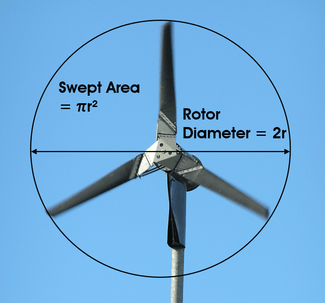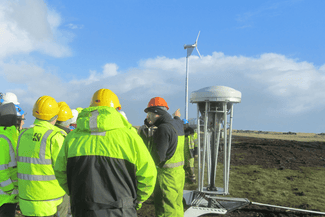Siting a Wind Turbine
The power in the wind is proportional to the cube of its speed; twice the wind speed gives eight times the power. Small differences in average windspeed cause large differences in available wind energy. So, for optimum performance, it is important to find a site which offers the highest overall windspeeds.
Avoid locations with excessive gustiness or turbulence, since they will reduce the output from a wind turbine and lead to undue wear and strain on component parts.
Siting of a wind turbine should take account of exposure to the prevailing winds. Factors such as surface roughness and obstructions are important, e.g. woodland or built up areas will create higher turbulence than open grassland. Cliff tops are to be avoided and wind generators must be sited clear of obstructions to the wind.
A useful rule is to place the wind turbine at a distance from any obstacle (building etc.) of at least ten times the height of the obstacle; or on a tower that is at least twice that height.
Wind speed can increase dramatically with height, especially over rough surfaces, such as in wooded or hilly areas. This means a significant increase in power production can often be obtained for a given cost by using a smaller wind.
The ideal site for a wind turbine is a smooth hill top, with a flat, clear fetch at least in the prevailing wind direction.
Near the top of the hill the wind speeds up significantly and the flow should be reasonably smooth.
In practice, especially for small machines, there is a compromise between choosing the best wind site and other considerations.
In choosing a good site for a wind turbine there really is no alternative than having a site survey by an experienced installer.
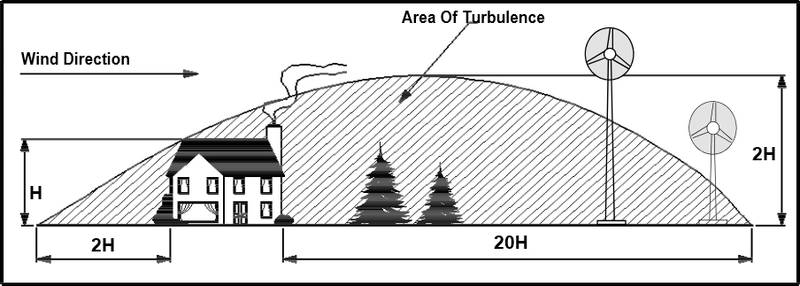
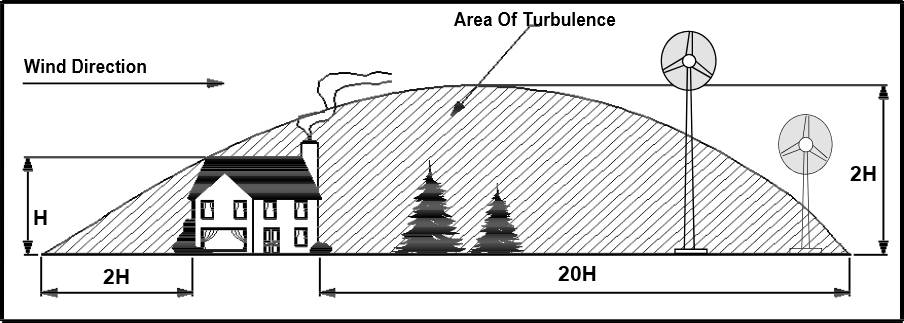
Planning Permission
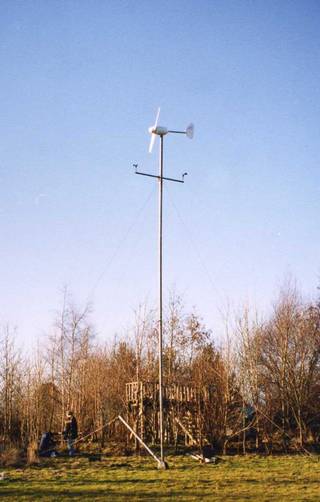
The installation of a wind turbine normally requires permission from the local planning authority.
In practice, use of the smaller battery charging systems meets few problems.
The height and location of the wind turbine will affect whether planning permission is needed; in general, those with rotor diameters of more than two metres will require consent. If it is to be used purely for agricultural purposes on agricultural land, there may be a farming general consent covering the installation; however, the local planning office should still be contacted.
The installation can be considered to be permitted development if certain conditions can all be fulfilled. These include:
- The highest part of the stand alone wind turbine must not exceed 11.1 metres.
- The distance between ground level and the lowest part of any wind turbine blade must not be less than five metres.
- An installation is not permitted if any part of the stand alone wind turbine (including blades) would be in a position which is less than a distance equivalent to the overall height of the turbine (including blades) plus 10 per cent of its height when measured from any point along the property boundary.
- The swept area of any stand alone wind turbine blade must be no more than 3.8 square metres. Consideration must be given to any neighbours and for larger systems, prospective users are advised to seek the advice and assistance of the local planners at the earliest possible stage - sites in National Parks or SSI's may face objections.
Aesthetics
The visual impact of a wind turbine system must be carefully considered. Colour, good design and sensitive siting are important.
Please Note: it is not advisable to site anything other than very small wind turbines on a house. Apart from transmitted noise, winds over buildings are turbulent which results in loss of performance and extra wear.


Acoustic Noise

Small wind turbines produce very little noise, they give a low whirring, not much more noticeable than the noise of the wind itself.
Noise from small wind turbines has two forms:
- aerodynamic noise from the rotating blades
- mechanical noise from the generator
Whether the noise is intrusive or not will depend on the level of extraneous background sound.
However, if the pole is attached to a boat, vehicle or building, vibration noise may be amplified. Resonance can be avoided by damping or altering a dimension of the support structure. With larger machines there may also be gearbox noise but this should be minimal with a good design. However, large grid-connected wind turbines should not be sited closer than 400m to dwellings.
TV interference etc...
This can result from towers and blades causing obstruction; reflection of the signal; or by electrical interference from the generating equipment. Usually this is only a problem for larger wind turbines in areas where radio & television signals are weak.
Larger machines should not be sited on a direct line of site between microwave transmitters and receivers etc.


Land Use
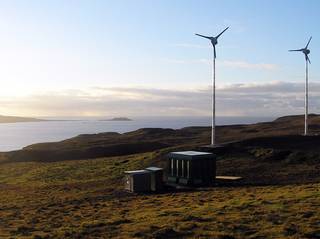
The siting of a wind turbine actually takes up very little ground area. Existing land use is normally unaffected with access right up to the tower base. However, factors such as convenience, future building plans, recreation, agriculture, animals and mowing etc. need to be considered.
Ease of Installation & Maintenance
Not the least important consideration!
Some of the windiest sites are also the most difficult to get to - especially for cranes and lorries, which are needed to install large machines.
Cabling
A voltage drop occurs along wires - in low voltage battery based systems this can be significant, so output cables must be sized appropriately to avoid undue power losses.
Normally underground armoured cable is used and since heavy cable can be expensive this can be a factor in the siting of a wind turbine. However, if higher windspeeds are obtained by siting further away, the resultant increase in power production can compensate for these power losses.
For grid connection of a larger machine, proximity to 11kV power lines is normally required. Conversely this means that good wind sites with existing high voltage supplies can have the potential for the commercial exploitation of wind power.


Installation

Small wind turbine generators are generally mounted on guyed poles, lattice towers or unguyed tubular towers. Depending on the proposed site and the size of wind turbine, concrete foundations may be required.
Installation of the wind turbine will involve the advanced laying of foundations, the assembly on site of the components and the erection of the wind turbine and tower using a winch.


Due to the skills involved, anything other than very small wind turbines should only be installed and serviced by qualified personnel.
